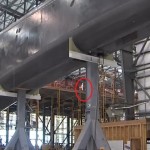Samsung heads into CES 2026 with momentum Samsung Electronics is closing out 2025 with a strong signal of where its future tech ambitions lie….
Here’s everything you need to know about the enormous Roc space plane

Deep in the Californian Mojave desert an ambitious project is taking place that aims to send ripples through the corridors of time. A beast is being created, the likes of which the world has never seen. This creature is “Rocâ€, named after the Middle-Eastern bird of prey, and it will be the largest plane ever constructed in the history of mankind.
Roc is being built by the Mojave Spaceport based aerospace company, Scaled Composites, for Stratolaunch Systems, a space transportation venture founded by Microsoft co-founder Paul Allen. The purpose of this monstrosity will be to fly unmanned payloads or manned space rockets out into the stratosphere so that it can be launched mid-air instead of taking off from the ground.
Until recently, there was not much known of this mysterious project. Fortunately KGET 17, a Bakersfield affiliate of NBC, was granted “unprecedented access†to the Mojave Spaceport facility where the plane is being built. And so the first images of Roc surfaced, feeding our hungry muggle minds with a good dose of bewilderment and amazement.
Who’s involved?
Scaled Composites, the aerospace company responsible for building the massive carrier plane, was founded by aerospace engineer, Burt Rutan, in 1982. Rutan is well-known for his innovative and original aircraft designs, such as the record-breaking Voyager that was the first plane to circumnavigate the planet without stopping or refuelling.
Stratolaunch Systems, the directors of the project, is a company that specializes (just as it namesake suggests) in air launch to orbit flights. It was also founded by Burt Rutan together with the incomprehensibly wealthy Microsoft co-founder, Paul Allen, in 2011. They were the original designers of the Roc concept and have previously collaborated on the Ansari X Prize-winning space plane, SpaceShipOne.
Then there is Orbital Sciences, the creator of the Pegasus II rocket that Roc will be carrying. The company was founded by David W Thompson in 1982 and aimed to “bring the benefits of space down to Earthâ€. Even though it is still referred to as Orbital Sciences, it has been operating under the name Orbital ATK, Inc. since it merged with Alliant Techsystems on February 9 of this year.
Just how big is “Roc”?
The answer is absolutely monolithic. It will boast a wingspan of 385 ft (177m). That is about 65 ft (20m) more than the Hughes H-4 Hercules (Spruce Goose), which is currently the largest constructed aircraft to date, which only made one brief flight in 1947. To put it more in perspective Kevin Mickey, president of Scaled Composites, says that if you placed Roc in the centre of an American Football field the wings would roughly hang 15 ft (4.5m) over each goalpost. Starting to get the picture?
Roc is considered to be a larger version of Virgin Atlantic’s SpaceShipTwo. It will consist of two fuselages connected by the wings that are fitted with six Pratt & Whitney PW4056 engines salvaged from two Boeing 747-400s.
Here are some images, courtesy of KGET 17, which puts the scale in perspective. The engineers working on the plane are circled in red:

Roc Spaceplane

Roc Spaceplane

Roc Spaceplane

Roc Spaceplane

Roc Spaceplane

458412-stratolaunch-roc-credit-stratolaunch-systems

The purpose and future of Roc
Roc has been specifically designed to carry Orbital Science’s 550 000 lb (249 476 kg) Pegasus II space rocket (a.k.a. Thunderbolt) out into low-Earth orbit for launch. It has a range of 1 000 nautical miles and together with the Thunderbolt rocket and it will have a gross-weight of over 1.3-million pounds (589 670 kgs).
According to Kevin Mickey, Scaled Composites has currently built “roughly 200 000 lb. of the composite structureâ€. Surprisingly, flight tests are scheduled to take place only a year from now (2016), with official launch operations starting in 2018.
But even though this ambitious project aims to gain its place in history, it is still met with a lot of scepticism. Some of the companies involved, specifically Stratolaunch and Orbital Sciences, have had a bit of a shaky history lately when it comes to space flight.
In October 2014, only days apart, both these private space firms had unsuccessful flights. First an unmanned Orbital Sciences space rocket, which was supposed to carry supplies to the International Space Station, exploded only moments after its take-off from the Mid-Atlantic Regional Spaceport. A few days later the Scaled Composites built SpaceShipTwo suffered a terrible crash during a test flight, resulting in the death of one of the two pilots.
For now, only time will tell if the Roc project will accomplish its goals. But if this endeavour proves to be successful, we can count ourselves among the fortunate who will witness a great moment in history.








